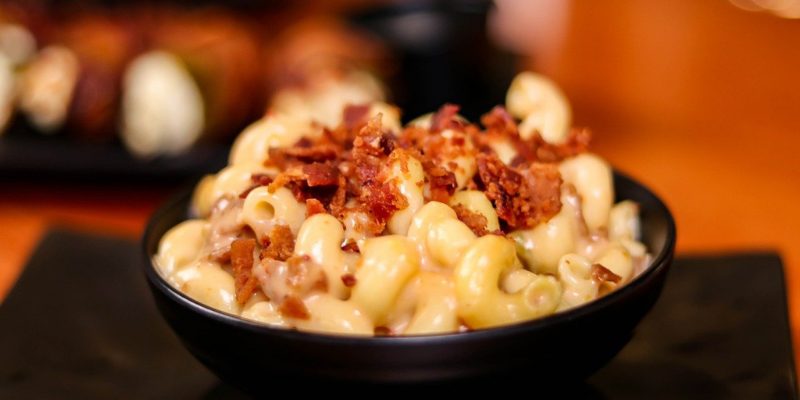
By Francine Barone
Food is a universal human experience. People everywhere must eat to survive, yet what foods are eaten and how they are enjoyed can vary widely across cultures and time.
“Comfort foods” made a comeback in 2020. From salty snacks to sugary treats, comfort foods do more than merely satiate hunger. Indeed, we often turn to them for emotional support, such as when we are experiencing sadness, boredom, or loneliness. What are your go-to guilty pleasures when you are feeling low? Some gravitate towards desserts like brownies, cakes, cookies, and ice cream, while others hone in on carbohydrate-laden chips, macaroni and cheese, or french fries. For extra cozy comfort, home-cooked favorites like casseroles, stews, curries, pasta, or porridge are popular dishes around the world.
For extra cozy comfort, home-cooked favorites like casseroles, stews, curries, pasta, or porridge are popular dishes around the world.
In the early days of 2020, social media was replete with posts promoting low-calorie, high-protein diets and healthy meal planning. By March, fitness gurus were eclipsed by funny memes featuring endless grazing on snacks between the bed and makeshift “home office”. Soon, supermarket shoppers everywhere aspired to become artisan home bakers overnight. Home-made bread recipes spread across the web alongside the return of once passé processed foods – such as spam and ramen noodles – to many pandemic pantries. While the dishes that bring comfort vary from culture to culture and person to person, is turning to food for comfort a cultural universal?
Food and emotion
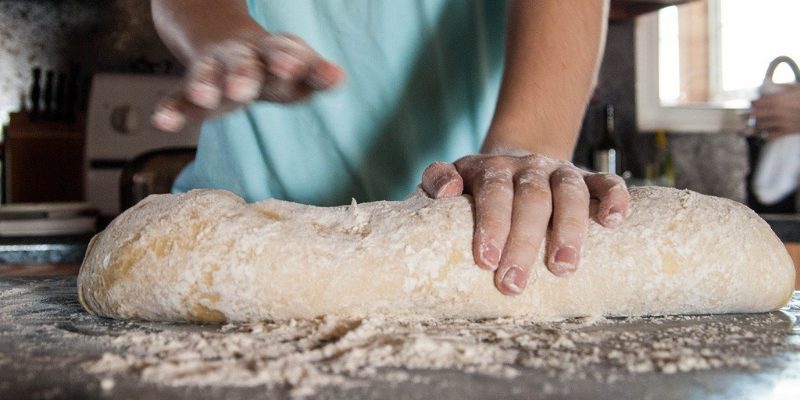
The shift in food habits has been influenced by people spending a great deal more time at home. Uncertainty in food supply chains around the world, along with reduced incomes in many households, have led to adapting one’s cooking skills and familiarity with raw ingredients. However, necessity is not the only reason to cook for comfort. Stress, depression, and isolation are all emotional triggers that are likely to lead us to seek support in our favorite dishes and to indulge in tasty treats, all the while bolstering our association of food with nostalgia for happier times.
Food choices closely align with our emotional needs, whether happy or anxious, lonely or depressed. Dietary habits tell us as much about individual preferences as they do about the family and society in which one lives and has been socialized. In his study of rural Igboland, Southeastern Nigeria, Okere argues that “the formation of food habits is a kind of cultural conditioning. Through long-term cultural and familial factors, definite food preferences, whether for certain food or for certain ways of preparations, are created” (1980: 279). Furthermore,
The food habits of an individual are the characteristic and repetitive acts that he performs under the influence of the need to provide himself with nourishment and simultaneously to meet an assortment of social and emotional goals. By the choices he makes, which become habit or repetition, he strives to achieve such satisfactions as security, comfort, status, pleasure, and enhancement of his ego. Once formed, food habits tend to be hard to change (ibid).
On the one hand, food habits are influenced by the wider society in which we live, based on how items in the regional diet are traditionally prepared and presented (known as cuisine). On the other, the development of particular food habits can be influenced by personal experiences at a micro level, such as familial preferences, upbringing, and exposure to different textures or flavors from a young age.
Sweetness and spice

Try not to be too hard on yourself if you find that you have been snacking a little more throughout 2020. The habit of sneaking treats between meals can also be found in the ethnographic record. According to Huntington (1987: 657), while the Amish have strict eating habits when at home and at work, men who venture outside of the community have a tendency to snack when they are away:
In contrast to the absence of between meal snacks observed in the home, Amish who are outside the community eat constantly. As one man, who lived in the small market city to the north of the central Ohio community, said, “You never see an Amishmen that he isn’t stuffing his face.” Even when they go to Stoneyrun to buy potato chips, pretzels or popcorn to munch and often stop in at the ice cream parlor for an ice-cream cone or to sip a milk shake through a straw, or at the restaurant for a glass of beer.
Perhaps this affection for sweets is cultivated at a young age because of its association with love and emotional support. Huntington describes a sugar-coated parenting habit among the Amish:
Several times I was told, “You can’t raise children without candy. Candy is given to a child whenever he must face an unpleasant situation for which he is not responsible. Thus when the parents leave the children for a few hours they give them candy, if a child is hurt, he may be given candy, if he must have a sore dressed or a cut cleaned, he is given candy. When something unpleasant happens that is not his fault he is reassured with affection and candy (ibid. 655).

A common observation for anyone who has traveled between cultures or sampled the cuisine of another nation is to notice any contrast in the dominant flavor profile compared with what one is used to; i.e., if locals tend to prefer relatively sweet, savory, spicy, or bland foods.
As found in the British (1485-1603) collection in eHRAF World Cultures, Pearson (1957: 557) suggests that, in Elizabethan England, the “whole nation had one great sweet tooth”:
As English drinks were sweeter than those of other countries, they helped to increase the enormous quantities of sugar which were consumed. […] Currants were used in such large amounts in cakes and puddings, sauces and custards that foreigners thought the English must use them to fatten hogs. Sugar and drink were combined in the usual diet of the fashionable in town or country, and if the table was well laden, these supplemented some form of fowl or hunted game like venison, hares roasted and boiled, and even rabbits. These meats were also served in pies with powdered ginger or cinnamon, cloves or saffron, and stiffened with eggs. The crust might be dotted with currants or minced dates.
Whether rich and savory, or extra spicy, one of the most recognizable comfort foods around the world are hearty one-pot dishes – such as stews or casseroles – combining meat, vegetables, and/or starches in a seasoned sauce. The example of Cajun gumbo – a spicy chicken or seafood soup thickened with okra – reveals how geography, class, history, and palate all come together in well-loved regional specialties. The name “gumbo” is believed to derive from a word of African origin for okra (guingômbo), the key ingredient used to flavor and thicken the broth of the meat and vegetable stew (Rushton 1979: 212).
Unlike the Elizabethans described above, Cajuns are known for a love of heat in their cooking:
Louisiana’s Cajun gumbo has an unforgettable taste, not only because of its African but also because of its Spanish contributions. Hot peppers, and hot sauces like Tabasco made from them, have become indispensable ingredients in all Cajun cooking. The Indians pitched in a few ingredients, too: gumbos without okra can be flavored and thickened with filé powder, made from ground-up sassafras. Some linguistic detectives even suggest that “gumbo” is a variation of the Choctaw word “kombo,” for sassafras. The pedigree of a good gumbo is as mysterious and complex as its taste (Rushton 1979: 212).
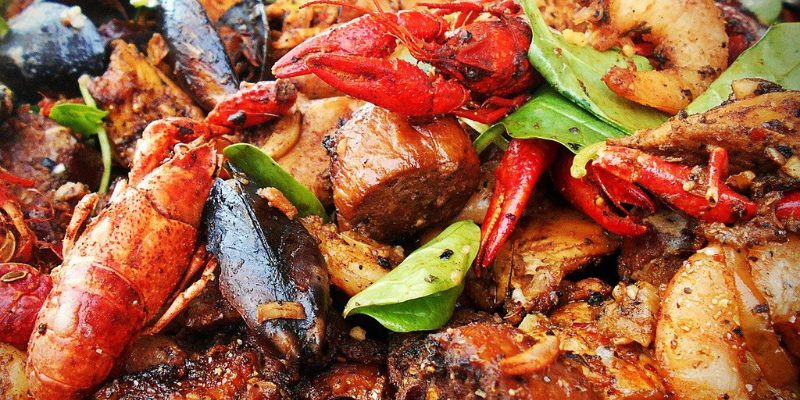
Gumbo is a common dish across all walks of Cajun life. According to Ancelet, et al’s Cajun Country (1991: 35):
On the Cajun prairies, for example, one can find basic gumbo spiced only with salt and cayenne pepper, served with squirrel, duck, or alligator and eaten with tin or even plastic spoons. But gumbo is also served in fancy New Orleans restaurants, flavored with exotic spices, loaded with expensive shrimp and oysters and eaten with silver spoons.
Whether a simple country dish, or one that is served on fine linen, gumbo is at the heart of Cajun cuisine and cultural identity. Yet Louisiana Cajuns are not the only Acadian population in North America. Acadians in the present-day Canadian provinces of New Brunswick, Prince Edward Island, Nova Scotia, and Quebec are descendants of 17th and 18th century French settlers. The Canadian Acadian version of a hearty stew or fricot, however, bears little resemblance to that of its Cajun cousins:
Chowders are common in the Maritime areas of Canada inhabited by Louisiana’s Acadian cousins, but the meal-in-a-pot theme is the only similarity between the two cuisines. The Canadian fricou features potatoes, meat, and dumplings–seasoned, if at all, with a bunch of summer savory inserted top-down into the boiling stew, the savory’s stalks poking insolently out between the pot and its lid. While nutritious and filling, such Canadian Acadian food strikes the Louisiana palate as having little or no taste (Rushton 1979: 212).
These two hearty dishes reveal how food and culture are intertwined. Culinary traditions evolve over time and place, taking into account the geography and history of those who prepare and enjoy them. The distinct flavor profiles give us insight into unique cultural worlds of two different Acadian cultures, with each dish becoming an archetypal comfort food in its own right.
Making and keeping memories
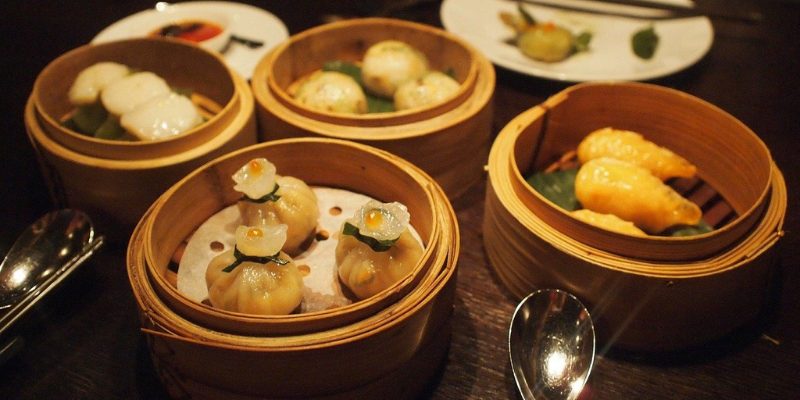
One will often find strong connections between cultural identity, belonging, nostalgia, and food within diaspora communities. Food habits may become one of the last remaining cultural traits of a displaced population in a new land, and the act of recreating comforting dishes from home satisfies both hunger and the heart. Typically, aspects of a traditional dish or style of cooking are modified with local ingredients and eventually come to meld with the flavors of the adopted society, creating an entirely new hybrid “tradition”. Food intersects with so many domains of everyday life that it is central to the continual process of affirming and remaking one’s cultural identity during periods of upheaval or change.
For Chinese-Americans in New York City’s Chinatown, fast food restaurants fulfill a number of roles in the immigrant community. They provide a source of quick meals, which is helpful to wives and mothers who remain charged with running their households while also working long hours in their new urban setting. The Chinese-American fast food industry also offers a comparatively low-investment business opportunity for entrepreneurs. As a result, the profitable and rapidly growing takeout industry has spread to every street corner in Chinatown (Zhou 1992: 98). In addition to takeout, most Chinese-owned restaurants serve dishes modified to suit American eating habits and tastes, even if the creations are unlikely to be found anywhere in China.
A third type of restaurant – one serving “authentic” Chinese cuisine – also exists. These serve the more social and cultural needs of the Chinese-American community by providing stylish surrounds in which to socialize and entertain family and friends. From crowded weekend and holiday dim sum services, to large banquets for birthdays and weddings that must be reserved years in advance, the ethnic Chinese of New York City “go to these restaurants not simply for the food but to feel the cultural atmosphere associated with their home country” (ibid. 99).

These bastions of Chinese identity represent a place of refuge and togetherness for the Chinese community in a place very distant from their homeland. The traditional foods served and communal-style meals reinforce nostalgia for Chinese culture and identity while recent immigrants forge new lives in America. Alongside so much social and cultural change, these ethnic food cultures remain a constant, which is another way that food brings comfort.
A second example of the importance of traditional foods in ethnic minority communities can be found in the Italian-Americans culture collection in eHRAF World Cultures. Orsi (1985) describes the lives of Italian-Americans in Harlem in New York City during the Feast of the Madonna of Mount Carmel on East 115th St. In one story recounted by locals, an American doctor was called to visit a sick patient. His house call was followed by that of Donna Rosina, a local matriarch in the Italian-American neighborhood, who accused the non-Italian doctor of trying to poison the woman with medicine (Orsi 1985: 194). Donna Rosina argued that,
a man who can’t speak a word of Italian is no good to cure the Italians when they’re sick […] I know them … they’re all alike, ordering the windows to be opened in the sickroom and keeping people’s friends away from them, as though anyone wanted to be alone when they are sick. How can anyone get well without good wine and strong food to strengthen them, and the company of their friends to cheer them up?
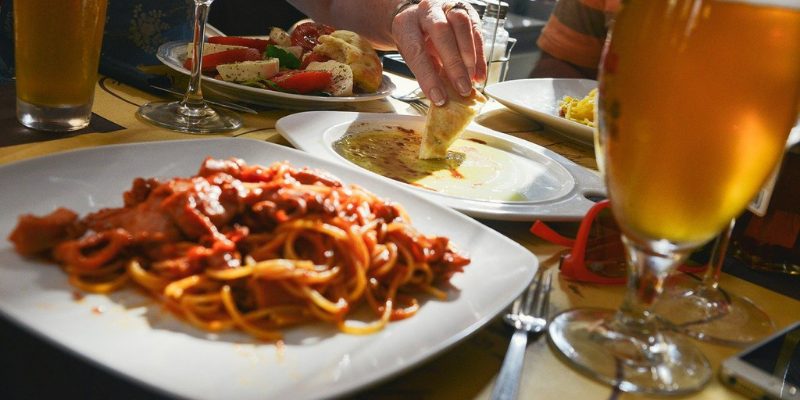
In other words, “to be deprived of traditional food is to be deprived of deeper sources of nourishment”(ibid.). For Donna Rosina and her Italian neighbors, the healing power of food and togetherness would be of greater comfort to the sick patient than the doctor’s prescribed treatment.
Eating together
The above examples highlighting the importance of communal food habits within diaspora communities share some notable features with pandemic food practices and how they are portrayed on social media. Many have succumbed to emotional eating at home while combating feelings of loneliness and isolation. Social media allows them to share this experience with others in a lighthearted way. By posting memes about over-snacking on junk food, nostalgic childhood meals, and taking part in the viral bread-baking craze, participants may overcome their personal isolation by building interpersonal bonds around food. Similar to immigrant groups who gravitate towards ethnic cuisine when separated by a great distance from their families and homelands, those stuck at home can safely connect with others through the development shared food rituals.

Starch, sugar and carbs might pad out our diet as emotional stop-gaps, but what brings us the greatest feeling of comfort and security are building relationships and connecting with important people in our lives. Commensality – or the act of eating together with others – fosters strong bonds of solidarity. Looking back at important moments and milestones in our lives, some of the most powerful memories we hold are associated with cooking, eating, and enjoying food together with friends and family.
Powdermaker illustrates the significance of the family meal in the daily life of the Lesu in Papua New Guinea:
When they get up at sunrise, they will eat a cold baked taro left over from the day before. But this is not a meal. The man will often munch his taro as he strolls about the beach, while the woman will eat hers casually as she tidies the house or collects her implements, baskets, etc. to go to the garden. In the middle of the afternoon, when they have returned from the gardens, if hungry, another cold baked taro will be eaten casually. But after the sun has set, there is the family meal. The food for this is sometimes prepared by the wife, or wife and daughter together, and at other times the women of the hamlet may cook communally. The baked food is later taken to each individual household. There, in the open compound in front of the house, each family gathers around the fire and partakes of the common meal. Certainly this meal emphasizes the unity of the family and tends to foster those sentiments which hold the family together—just as the feasts keep alive the sentiments binding larger groups (1932: 245).
Thus, while snacking throughout the day may satiate hunger and boredom, sharing a meal with others that we care about – albeit temporarily from a virtual safe distance – is what can turn nearly any food into comfort food.
Francine Barone
HRAF at Yale University
References
Ancelet, Barry Jean, Jay Dearborn Edwards, and Glen Pitre. 1991. “Cajun Country.” In Folklife in the South Series, xxiv, 256. Jackson, Miss.: University Press of Mississippi. https://ehrafworldcultures.yale.edu/document?id=no12-001.
Huntington, Abbie Gertrude Enders. 1987. Dove at the Window: A Study of an Old Order Amish Community in Ohio. Ann Arbor, Michigan: University Microfilms. https://ehrafworldcultures.yale.edu/document?id=nm06-015.
Okere, Linus Chukwuemeka. 1980. Socio-Economic and Cultural Aspects of Food and Food Habits in Rural Igboland. Ann Arbor, Mich.: University Microfilms. https://ehrafworldcultures.yale.edu/document?id=ff26-029.
Orsi, Robert A. 1985. The Madonna of 115th Street: Faith and Community in Italian Harlem, 1880-1950. New Haven, Connecticut: Yale University Press. https://ehrafworldcultures.yale.edu/document?id=n010-002.
Pearson, Lu Emily. 1957. Elizabethans at Home. Stanford, Calif.: Stanford University Press. https://ehrafworldcultures.yale.edu/document?id=es14-010.
Powdermaker, Hortense. 1932. “Feasts in New Ireland: The Social Function of Eating.” American Anthropologist Vol. 34: 236–47. https://ehrafworldcultures.yale.edu/document?id=om24-005.
Zhou, Min. 1992. “Chinatown: The Socioeconomic Potential of an Urban Enclave.” In Asian American History and Culture Series, xxiv, 275. Philadelphia, Pa.: Temple University Press. https://ehrafworldcultures.yale.edu/document?id=nk06-011.